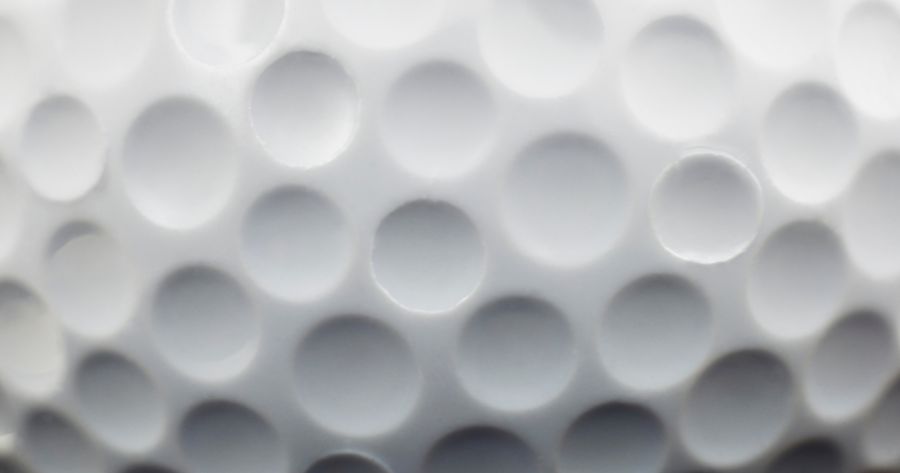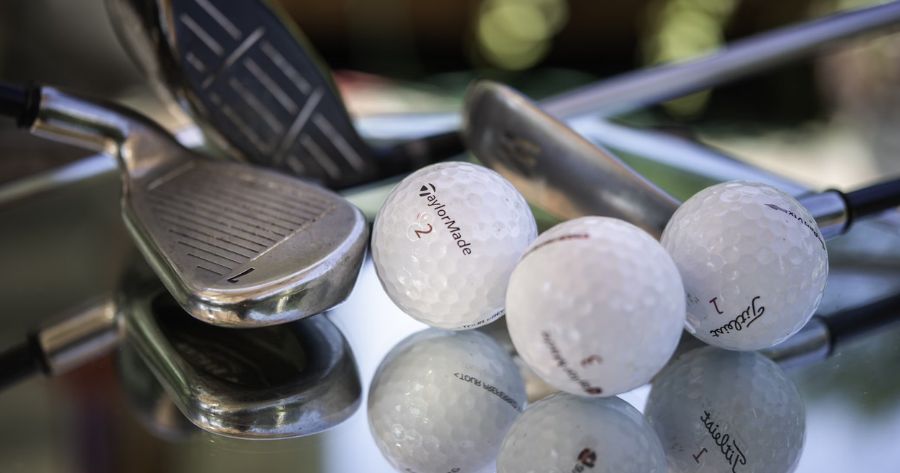
Key Takeaways
- Single-digit numbers (1-4) help players identify their balls on the course
- Two-digit numbers often represent the ball’s compression ratings, indicating ball firmness
- Three-digit numbers typically show the number of dimples on the ball’s surface
- Dimple count affects aerodynamics, influencing lift, drag, spin, and distance
- Some manufacturers use numbers for model identification or production codes
- Choosing the right ball depends on personal preferences and playing style
What Do the Numbers on Golf Balls Mean?
If you’ve ever wondered what those mysterious numbers on golf balls mean, you’re not alone.
In all honesty, I actually didn’t notice it until my 2nd year playing. I would use whatever golf ball I had in my bag.
Eventually, I started playing with premium 2nd hand balls and that’s when I noticed it.
At first, I didn’t think anything of it, since the majority of the balls I played with were single digits, usually 1 to 4.
Then I started noticing numbers in the 70s and beyond.
That’s when I started thinking “What do these numbers on golf balls mean?” and “Is this the reason for my slice?” 😀
It wasn’t until I dove into the world of golf ball numbering that I understood their significance.
See, the numbers on a golf ball aren’t just random digits; they serve specific purposes.
From helping you differentiate your ball on the golf course to indicating compression levels, these numbers are more than meets the eye.
In this post, we’ll jump into the world of golf ball numbering systems.
You’ll discover why manufacturers use different numbers and how understanding them can improve your game.
Whether you’re a beginner or a seasoned player, understanding golf ball numbers can give you a leg up on the course.
What Do The Numbers On The Golf Balls Mean?
The number on the golf ball represents multiple attributes of the ball. Single-digit numbers, usually ranging from 0 to 9, are all about identification purposes. Double-digit numbers are often linked to the ball’s compression rating. Lower numbers mean softer balls and higher numbers mean harder ones. Three-digit numbers usually indicate the number of dimples on the ball. More dimples generally mean more lift and less drag, which can translate to longer shots.
Let’s dig deeper!
What Do The Single-Digit Numbers On A Golf Ball Mean?

The single-digit numbers on the golf ball typically range from 0 to 9 and they’re meant to help you identify your golf ball from the other golfers in your group.
It’s essentially your ball’s ID tag, plain and simple.
Think about it.
You’re out there with your buddies, everyone’s using the same brand of ball, and suddenly you’re all arguing over whose ball is whose.
That’s where these little numbers come in handy – they’re your personal identifiers.
Most golf balls come stamped with numbers from 1 to 4.
Why? Well, it’s simple math.
In a foursome, each player can use a different number, making it a breeze to tell your balls apart.
But here’s where it gets interesting.
Some manufacturers mix it up a bit.
You might find balls with numbers 0, 5, 6, 7, 8, or even 9.
It’s not common, but it happens. And for some golfers, these “odd” numbers become their lucky charms.
Have you ever heard of a golfer who swears by their “lucky 7” ball? Yeah, it’s a thing.
What Do The Two-Digit Numbers Mean?
The two-digit numbers on golf balls represent the compression rating and they typically range from 00 to 99. Lower compression (00-40) represents softer balls whereas higher compression (80-99) represents firmer balls.
Choosing the right compression rating is meant for golfers who have dialed in their game, such as low handicappers.
They’ve mastered the fundamentals and are looking at ways to improve their game even further.
Here’s a quick breakdown:
| Compression Rating | Typical Number Range | Ball Characteristics |
|---|---|---|
| Low | 00-40 | Softer, more forgiving. Great for slower swing speeds like seniors or juniors. They’ll give you that extra oomph off the tee and potentially give you more distance. |
| Medium | 50-70 | Balanced performance. Not too soft, not too firm. Perfect for most amateur golfers with average swing speeds. |
| High | 80-99 | Firmer, for faster swing speeds. If you’ve got a swing speed that’d make Tiger Woods jealous, these are your go-to. |
But here’s the kicker – not all manufacturers use the same system.
Some might use different number ranges or even skip compression ratings altogether.
A 90 from one brand might feel different from another’s.
So, don’t get too hung up on the digits.
Instead, experiment with different compressions to find what works best for your swing.
What Do The Three-Digit Numbers Mean?

The three-digit numbers on golf balls typically represent the total number of dimples on the ball’s surface. They can range anywhere from 300 to 500 but the most common ones you’ll find are 332, 392, or 434.
But why does this matter?
It all has to do with aerodynamics.
The dimples create a thin layer of air that clings to the ball’s surface and this layer, known as the boundary layer, helps the ball cut through the air more efficiently.
Here’s a quick breakdown of what those numbers might mean for your game:
| Dimple Count | Typical Characteristics |
|---|---|
| 300-350 | Lower trajectory, less spin |
| 350-400 | Balanced flight, moderate spin |
| 400-450 | Higher trajectory, more spin |
| 450+ | Maximum lift, potentially more affected by wind |
Manufacturers spend countless hours and spend hundreds of dollars a year tweaking these patterns to optimize performance and they all have their own sweet spots.
Titleist, for example, is known for their 392-dimple design on many of their popular models.
Fun fact: Titleist is also one of the most popular golf balls used by Tour Pros.
But don’t get too caught up in the numbers game. The dimple count is just one piece of the puzzle.
Additionally, a ball with 400 dimples isn’t automatically superior to one with 350. It’s all about finding what’s right for you.
PGA Tour Pros and Their Golf Numbers

Here’s a fun fact: some professional golfers have their preferences too.
Tiger Woods? He’s partial to the number 1 – always has, always will.
It’s not just about superstition (well, maybe a little) but it’s also about consistency.
Using the same number helps maintain a routine, which can be crucial in a game where mental focus is key.
Rory McIlroy? He likes to mix it up but favors 22.
It’s like their own little signature on the course.
Conclusion
Honestly, the number on the golf ball is just another nuance of the game.
If you’re a scratch golfer, Pro-Am, or playing professionally, then understanding and applying these numbers may make a difference to your game.
If you’re just starting or don’t take the game too seriously, then I suggest getting a single-digit ball to help you identify your ball.
I even know some single-digit golfer who doesn’t even care about the number they’re playing with because they personalize their balls.
In the end, it’s about choosing a ball for your game.
Before You Go
Although golf ball and their numbering system is just one piece of the “golf puzzle”, there are other aspects of the game that can help you.
Here are some other posts that can lower your score:
- Blades vs Cavity Back Iron: Which Can Boost Your Game?
- 5 Wood or 7 Wood? Why PGA Pros Choose One Over The Other
- Top 18 Reasons – Are Golf Lessons Worth It for Beginners?
Cheers!
